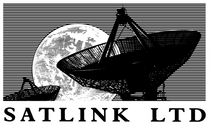UAVs Flying BvLOS
UAVs Flying BvLOS

Unmanned Aerial Vehicles (UAVs) and the ability to fly beyond the horizon / BvLOS (Beyond visual Line Of Sight) is set to play a major role in the coming decades. I predict the BvLOS UAV will establish itself as a major player (billions of $ worth) in worldwide infrastructure in the future.
The BvLOS UAV industry offers selection of airframes, systems and payload options to cater for market demand. These payload options include sensors, weapons, increased fuel capacity, etc. to allow the UAV to carry out incognito operations/ missions.
Currently BvLOS UAVs are predominantly used by the international military community providing ISR (Intelligence, Surveillance & Reconnaissance) over areas of interest without having to install soldiers / pilots (potentially at risk) over and within the area of interest. Operating UAVs beyond the horizon allows commanders to carry out ISR over dangerous locations where they can operate remotely from Ground Control Stations in safe environments removing the risk.

The immediate requirement is not an obvious one - similar to the requirement for early computers, more of a desire rather than a need. However UAVs have the potential to;
- Massively reduce world defence budgets
- Save countless lives
- Reduce the worldwide global carbon footprint
- Boost national economies, etc.
So, why has the UAV industry not ‘taken off’ yet?
Imagine you’re the CAA (Civil Aviation Authority) who regulates UK aerospace, there could be 9,000 manned aircraft using British skies in any one day, now imagine a rogue UAV flown by a pilot in Leicester, loitering at 20,000ft over Heathrow - in fact don’t imagine just think back to the Gatwick Palaver (Dec 18) then magnify that issue by everyone who can buy a UAV, operate a smart phone and use some imagination. To break this down furthermore, the CAA lacks the ability and resources to monitor every UAV pilot (which could be you or I) that appears on their radar in UK aerospace. -you see their hesitance.

A talking point on this issue lies between the hierarchy of which aircraft will have rights over another? (the same hierarchy that lies between boats under sail power and and boats under engine power)
- Will manned aircraft have authority over unmanned aircraft?
- Will there be a segregated airspace for unmanned aircraft?
- Will unmanned aircraft be forced to operate under a certain altitude?
The underlying difference between the maritime environment and the aeronautical environment is that all aircraft (manned and unmanned) all pose a serious risk to the unsuspecting general public beneath the aircraft.
However, the opportunities UAVs provide flying BvLOS outweigh the the reluctance of the CAA to adapt their existing ATC (Air Traffic Control) systems. If the CAA does indeed fail to adapt it may open an opportunity for the emerging likes of China, Korea and India to assert their technological dominance and leave the UK in a position having to integrate a non-sovereign ATC system similar to our potentially precarious Chinese 5G network infrastructure.
It is not uncommon to see 5.5m wingspan UAVs covering 600km beyond the horizon on one tank of fuel, this advance in UAV range requires a constant connection between the UAV and remote pilot. Satellite Communication has become the only form of communication offering a regional / global coverage capable of maintaining a sound connection between the two nodes. Satcom systems on UAVs are now being used to not only maintain connection between Pilot and UAV but also to transmit big data including; video/ sigint/ flight analytics) from the UAV to the remote pilot beyond the horizon.
Below is a map showing a range of 600km from London, UK.

